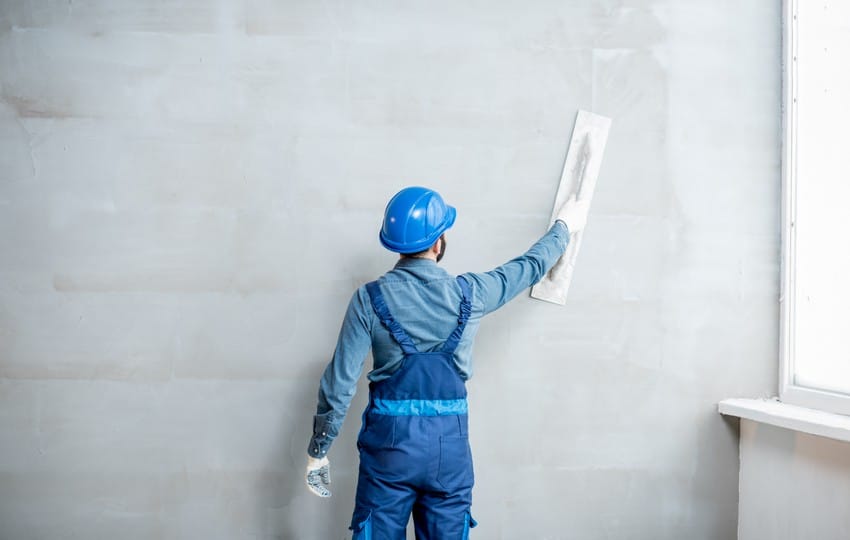Fire Door Inspection in London: Why Is It Crucial?
Fire door inspections are essential for ensuring safety, legal compliance, and risk mitigation in buildings. contact us for professional fire door inspection in London.

Regular Fire Door Safety Assessments
Why Choose All Service 4U for Fire Door Inspection in London

Fast Response
We guarantee swift, reliable service for your fire door inspection needs.

No Hidden Costs

Qualified Experts

Free Quotes
About All Service 4U
At All Service 4U, we’re dedicated to ensuring your safety through professional fire door inspections. Our history is rooted in a commitment to excellence, and our mission is to provide top-tier fire safety services. We’ve grown to become a leader in the fire safety industry, guided by our core values of integrity, expertise, and customer focus.
- Founded with a safety-first ethos
- Leaders in fire safety solutions
- Integrity guides our operations
- Expertise in fire safety regulations
- Committed to customer satisfaction
![]()
Trusted Company
We’ve established trust by consistently delivering quality and reliability in our fire door inspection services.
![]()
Experienced
Our team brings years of industry experience to every inspection, ensuring knowledgeable and thorough service.
![]()
Skilled Professionals
We employ only skilled professionals, trained to the highest standards for detailed and accurate inspections.

Work Guaranteed
With All Service 4U, you’re assured of work that meets stringent safety and compliance standards.
Accreditations & Certifications
Our inspectors are Gas Safe, NICEIC Approved, and ISO 9001 and 45001 Certified, ensuring top-tier fire door safety checks. Contact us for accredited expertise.




What Does a Certified Fire Door Inspection Entail?
Choosing a certified inspector for your fire door checks is crucial. Certifications ensure inspectors are up-to-date with the latest safety standards and can provide a thorough assessment of your fire doors.
During an inspection, certified professionals examine several critical aspects:
- Verification of proper fire door certification
- Inspection of seals, gaps, and door hardware
- Assessment of door closure and opening mechanisms

About All Service 4U Core Services
At All Service 4U, we offer a comprehensive suite of fire door inspection services tailored to your unique needs.
Emergency Locksmith
Our emergency locksmith services are available 24/7, ensuring you’re never left unsecured, especially after a fire incident.
Non-Destructive Entry
We specialise in non-destructive entry techniques, preserving your fire doors’ integrity while addressing your security concerns.
Lock Replacements
Should your fire doors require new locks, we provide high-quality replacements that meet all safety and compliance standards.
Home Security
Our home security assessments include evaluating fire doors to enhance your overall safety and peace of mind.
Smart Locks
We integrate smart lock solutions for fire doors, offering you advanced security with the convenience of modern technology.
Burglary Repair
In the unfortunate event of a burglary, we swiftly repair fire doors to restore safety and ensure they meet all regulatory requirements.
Clients Who Trust Us
Our fire door inspection services are trusted by Dominoes, McDonald’s, Costa, and leading FM companies like Adiuvo and Mears Group.
Worcester Boilers

Glow Worm Boilers

Valliant Boilers

Baxi Boilers

Ideal Boilers

Our Process
Initial Assessment
and Planning
We begin with a detailed assessment to tailor our inspection to your property’s specific needs.
Comprehensive 34-Point
Check
Our experts conduct a thorough 34-point check, using the latest technology for precision and reliability.
Detailed Reporting
Post-inspection, we provide a comprehensive report, outlining any issues and actionable recommendations.
Compliance and
Follow-Up
We ensure all findings align with legal standards and offer guidance for any necessary follow-up actions.
What Sets All Service 4U Apart
Our unique RFID technology ensures precise fire door inspections. We offer unparalleled expertise, continuous innovation, and additional client benefits for superior service.
Continuous Support and Maintenance
After our comprehensive fire door inspection in London, we at All Service 4U don’t just leave you with a report. We offer ongoing support to address any issues and ensure your fire doors maintain compliance. Our maintenance services are easily accessible, ensuring your fire safety measures are always up to standard.
We understand the importance of keeping your fire doors in top condition. That’s why our team provides continuous guidance and services to help you manage and maintain your fire safety infrastructure, ensuring long-term compliance and peace of mind.
Services Tailored to Your Specific Needs
At All Service 4U, we understand that each property is unique. We customise our fire door inspection services by considering the type of property, frequency of door usage, and your specific safety concerns. This personalised approach ensures that our inspections are not only thorough but also relevant to your particular needs.
Our ability to adapt to diverse requirements is demonstrated through our varied client portfolio. From residential buildings to high-traffic commercial establishments, we ensure that every fire door inspection is conducted with the utmost precision and attention to detail, tailored to the distinct characteristics of your premises.
Quality of Workmanship
At All Service 4U, our fire door inspections adhere to the highest quality standards, including those set by the British Woodworking Federation and UK Building Regulations. Our team is trained to meticulously evaluate every aspect of your fire doors, from the integrity of seals to the efficiency of closers.
We maintain these standards through regular training and adherence to the latest safety protocols. Our commitment to excellence ensures that the workmanship we deliver not only meets but often exceeds regulatory requirements, providing you with a service that is both reliable and exceptional.
Your Safety and Security
At All Service 4U, your safety is our utmost priority during fire door inspections. We meticulously adhere to stringent safety protocols, ensuring that every inspection is conducted with precision and care. Our inspectors are trained to respect your property’s security, employing non-invasive techniques that safeguard the integrity of your fire doors while thoroughly assessing their condition.
We provide you with the assurance that all safety and security measures are in place during our inspections. Our protocols are designed to minimise disruption while maximising protection, giving you peace of mind that your property and its occupants are shielded from fire risks. Trust in our commitment to deliver safety-focused fire door inspection services.
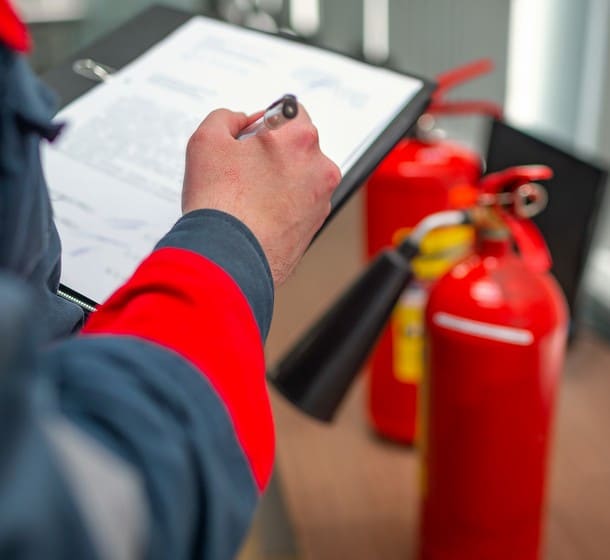
Call Today If You Have Any Problems
Please Call To Book A Plumber – Free No Obligation Quote with no hidden fees. We are professional and friendly.
Residential & Commercial Services
At All Service 4U, we provide tailored fire door inspection services for both residential and commercial properties in London. Our approach ensures that your premises meet all fire safety standards, regardless of size or use.
- Residential inspections focus on family safety.
- Commercial checks prioritise mass evacuation routes..
- Both services ensure compliance with UK regulations.
- Our expertise spans homes to high-rise offices.
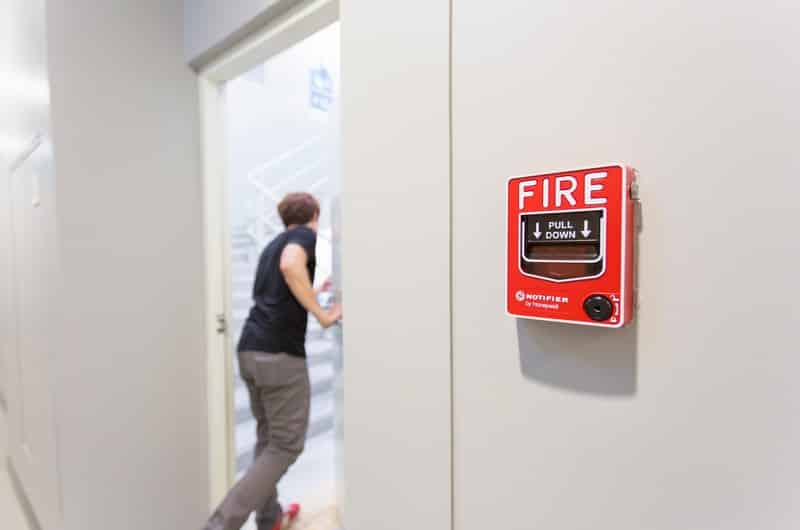
Sectors We Work In
At All Service 4U, we specialise in fire door inspections across various sectors, each with unique safety requirements.
Industrial
Industrial settings demand robust fire door solutions to withstand heavy usage and potential hazards.
Public Buildings
Public buildings require meticulous inspections to protect visitors and adhere to strict safety protocols.
Heritage
Heritage properties present unique challenges, expertly navigated to preserve integrity while enhancing safety.
Hospitality
In hospitality, we balance guest comfort with stringent fire safety measures through expert inspections.
Education
Educational institutions trust us to provide thorough inspections, safeguarding students and staff.
Qualified & Insured
Our inspectors are fully qualified, holding certifications that ensure your fire door inspections are conducted expertly.
All Service 4U maintains rigorous qualifications and comprehensive insurance coverage, providing you with assurance and protection. Our team’s certifications are regularly updated to align with the latest safety standards, ensuring the highest level of service. Insurance coverage means that in the unlikely event of an issue, you’re fully protected, allowing us to handle your fire door needs with confidence and care.
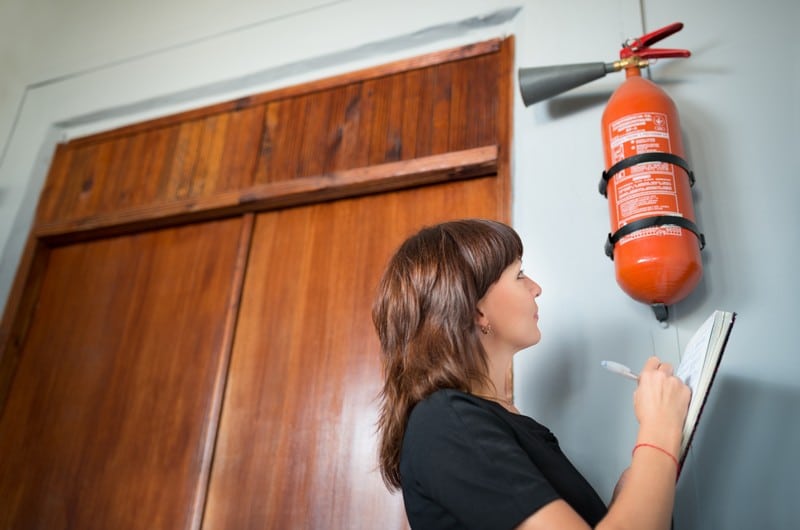
What clients are saying…
Super prompt service. Not taking financial advantage of an absent landlord. Kept being updated on what was going on and when. Was briefed by the engineer after the problem was fixed. Engineer was professional, friendly and prompt. Great value. Hig...
Thomas who came out was honest, helpful - set my expectations and above all - did a fantastic job. What an easy service to use and would recommend. Told me the price upfront as well so no hidden surprises.
Had someone available to sort the lock out within the timeframe specified and the price was notified up front, the locksmith texted to confirm appointment and arrived when he said he would after confirming our address. Problem was solved in a reas...
Our boiler stopped working, leaving us without heat and hot water. We reached out to All Service 4 UK, and they sent Kai, an engineer, who arrived promptly. Kai was professional and friendly, quickly diagnosing, explaining each step of the process...
Locksmith came out within half an hour of inquiry. Took less than a 5 mins getting us back in. Great service & allot cheaper than a few other places I called.
Had a plumber come out yesterday to fix temperature bar but couldn’t be done so came back out today to install a new one after re-reporting was fast and effective service got the issue fixed happy with the work that was done over the last few da...
Great customer service. The plumber came within 2 hours of me calling. The plumber Marcus had a very hard working temperament and did his upmost to help and find the route of the problem by carrying out all the checks. I really rated him. Wish the...
Called out plumber as noticed water draining from exterior waste pipe. Plumber came along to carry out checks to ascertain if there was a problem. It was found that water tank was malfunctioning and expelling excess water into drains rather than s...
We used this service to get into the house when we locked ourselves out. Very timely, polite and had us back in our house all within half hour of phoning them. Very reasonable priced too. I recommend if you have locksmith services required.
Renato the electrician was very patient polite quick to do the work and went above and beyond. He was attentive to our needs and took care of everything right away.
Very prompt service, was visited within an hour of calling and was back in my house within 5 minutes of the guy arriving. He was upfront about any possible damage, of which there was none. Very happy with my experience and would definitely recomme...
We are extremely happy with the service provided. Communication was good at all times and our electrician did a 5 star job. He was fair and very honest, and did a brilliant job. Highly recommend Pawel
Came on time, a very happy chapie called before to give an ETA and was very efficient. Kitchen taps where changed without to much drama. Thank you
Excellent service ! Lock smith there in 15 minutes and was able to gain access to my house and change the barrel with new keys.
Highly recommend this service 10/10
Thank you very much for your service when I needed it , I was locked out of the house with 2 young children in not very nice weather , took a little longer than originally said to get to us but still quick service at a reasonable cost , would reco...
The gentleman arrived promptly and was very professional explaining what he was going to do. He managed to get me back into my home in no time at all. I would recommend the service highly
Amazing service, answered the phone straight away, locksmith arrived in an hour as stated on the phone. He was polite and professional and managed to sort the issue within minutes and quoted a very reasonable price with no hidden extras.
Really pleased with the service ... I was expecting to get my locks smashed in but was met with a professional who carried out the re-entry with no fuss, great speed and reasonable price.
Called for a repair went out same day - job sorted with no hassle. Friendly, efficient and knowledgeable. Will use again if required in the future.
Even after 8pm Alex arrived within half an hour. He was very polite, explained his reasons for trying different attempts, took my preferences into account and put me at my ease at a rather stressful time.
The plumber arrived on time, was very friendly and fixed the problem quickly. Booking the appointment was very efficient and a plumber visited next day
Our Guarantee
- Full-Service Team
- Ongoing Customer Support
- 6 Months Workmanship Guarantee
- Full Manufacturer Warranty
- Qualified & Certified
- Prompt Arrival Pledge
- All rooms left as they were found
- Honest and transparent pricing
- 24/7 Emergency Assistance
- Rectify Issues: No Cost
We Make It Easy

Book An Appointment
Scheduling with us is straightforwardselect a time online, and we’ll confirm promptly.
We’re On Our Way
Our inspectors arrive on time, equipped to assess and ensure your fire door compliance.
Everything Explained
Post-inspection, we clearly explain findings and actions needed for your fire door safety.
Standard Rates (per hour)
| Rates | Mon-Fri 7am-6pm | Mon-Fri 6pm-12am | Saturday 7am-6pm | Saturday 6pm-12am | Sunday 7am-6pm | Sunday 6pm-12am | Mon-Sun 12am-7am |
| Appliances | £99.00 | £149.99 | £149.99 | £149.99 | £149.99 | £149.99 | £199.00 |
| Fridge/Freezers | £99.00 | £149.99 | £149.99 | £149.99 | £149.99 | £149.99 | £199.00 |
| Plumbing | £99.00 | £149.99 | £149.99 | £149.99 | £149.99 | £149.99 | £199.00 |
| Electrics | £99.00 | £149.99 | £149.99 | £149.99 | £149.99 | £149.99 | £199.00 |
| Heating & Gas Work | £99.00 | £149.99 | £149.99 | £149.99 | £149.99 | £149.99 | £199.00 |
| Drain Jetting & CCTV | £164.99 | £194.99 | £194.99 | £194.99 | £194.99 | £194.99 | £219.00 |
| Boiler Service | £99.00 | £164.99* | £164.99* | — | £164.99 | — | — |
| Gas Safety Certificate | £99.00 | £164.99* | £164.99* | — | £164.99 | — | — |
| Locksmith lock change labour | £59 | £69 | £69 | £69 | £69 | £69 | £69 |
Equipment & Materials
State-of-the-Art Inspection Tools
At All Service 4U, we utilise the latest equipment to ensure your fire doors meet all safety standards..
Enhancing Inspection Accuracy
Our advanced tools, like RFID scanners, improve the precision of our inspections, ensuring every detail is accounted for.
- RFID technology for precise tracking
- Thermal imaging for heat resistance checks
- Pressure gauges for closure force testing
- Smoke detectors for seal effectiveness
- Laser measures for gap consistency
- Digital documentation for real-time reporting
- Barcode scanners for inventory management
- Mobile apps for on-site efficiency
- Databases for historical compliance tracking
- {SEGMENT-16-CONTENT-1-LIST-10}
Keeping Up with Technological Advances
We continuously invest in the latest technologies to provide you with the most thorough fire door inspections available.
Project Timeframes
At All Service 4U, we understand that your time is valuable. Typically, our fire door inspection projects are completed within a day, depending on the number and complexity of the doors. We strive to work efficiently while ensuring a thorough and detailed inspection.
Ensuring Timely Completion
To ensure projects are completed within agreed timelines, we meticulously plan each inspection and coordinate closely with you, keeping any disruptions to your routine to a minimum.
Factors Influencing Inspection Duration
- Size and complexity of the property
- Number of fire doors to inspect
- Specific client requirements or concerns
Communication Is Key
We believe in transparent communication with you about project timelines, providing regular updates and promptly addressing any questions or changes that may arise. Our goal is to deliver a seamless service experience from start to finish, ensuring your fire door inspection is conducted with precision and without delay.

Get a FREE Quotation
Please Call To Book A Property Maintenance Expert – Free No Obligation Quote with no hidden fees. We are professional and friendly.
Industry-Leading Customer Services
Reliable
Our team’s expertise ensures dependable fire door inspections every time.
Responsive
We promptly address your inquiries, ensuring clarity and satisfaction.
Proactive
Anticipating needs, we offer guidance before you even ask.
Seamless Experience
From initial contact to post-inspection follow-up, we guarantee a smooth, hassle-free service.
- Comprehensive support throughout the process
- Clear, timely communication at every step
- Dedicated to resolving your concerns quickly
- Feedback is integral to our service improvement
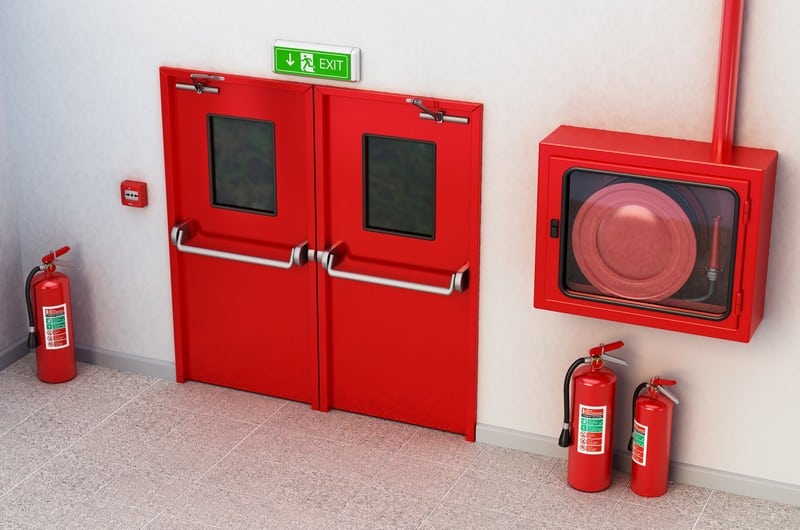
Frequently Asked Questions
Explore our FAQ section for insights on fire door inspection queries, enhancing your understanding and experience.
What Is the Recommended Frequency for Fire Door Inspections?
Fire door inspections are a critical component of building safety, and their frequency can be influenced by several factors. As a property or business owner, you must understand the guidelines and risks associated with the timing of these inspections.
Guidelines for Inspection Frequency
The Regulatory Reform (Fire Safety) Order 2005 recommends that fire door inspections should be conducted annually as a minimum. However, the frequency can increase depending on the usage, wear and tear, and the vulnerability of the occupants. High-traffic areas may require bi-annual or even quarterly inspections to ensure optimal safety.
Property Type and Usage
Different property types, such as commercial buildings, hospitals, and schools, may have specific requirements for fire door inspection frequency. For instance, healthcare facilities with a constant flow of patients and emergency situations may need more frequent inspections than a residential building.
Risks of Infrequent Inspections
Neglecting regular fire door inspections can lead to undetected damages or malfunctions, which in turn can severely compromise the door’s effectiveness in the event of a fire. This oversight not only endangers lives but can also result in legal consequences for failing to comply with fire safety regulations.
Scheduling Regular Inspections
To assist you in maintaining compliance and ensuring the safety of your premises, we can help schedule regular fire door inspections. Our team will work with you to determine the appropriate frequency based on your specific needs and the regulatory requirements. We provide reminders and follow-ups to ensure that your fire doors are always in peak condition, offering you peace of mind and protection against potential fire hazards.
By adhering to the recommended inspection schedules and understanding the unique needs of your property, you can significantly reduce the risks associated with fire door non-compliance. If you’re unsure about the current state of your fire doors or when your last inspection was, don’t hesitate to contact us for a professional assessment.
What Does a Professional Fire Door Inspection Cover?
When you’re responsible for the safety of a property, understanding what’s involved in a fire door inspection is crucial. A professional fire door inspection is a detailed process that assesses the functionality and compliance of your fire doors to ensure they are up to the standards required by UK safety regulations.
Key Elements Checked During an Inspection
During a fire door inspection, several specific elements are meticulously examined:
- Certification: Verifying that the fire door’s certification is current and valid.
- Integrity of the Door: Checking for any damage or alterations that could compromise the door’s performance.
- Gaps and Seals: Measuring gaps around the door to ensure they are within the permissible range and checking the condition of intumescent seals.
- Door Hardware: Assessing the condition and functionality of hinges, locks, latches, and closers.
- Operation: Ensuring the door opens and closes correctly without any obstruction.
- Signage: Confirming that the correct signage is displayed and clearly visible.
Assessment Techniques
Our inspectors use a combination of visual checks, physical tests, and specialised tools to assess the fire doors. This includes:
- Visual Inspection: Looking for obvious signs of wear and tear or damage.
- Manual Testing: Opening and closing the door to check for smooth operation.
- Measuring Tools: Using gauges and measuring tapes to check gap sizes and alignment.
- Specialised Equipment: Employing tools like RFID scanners to track and manage inspection data efficiently.
Ensuring Comprehensive Assessments
We ensure a comprehensive assessment by following a systematic approach that covers every aspect of the fire door’s functionality and compliance. Our inspectors are trained to use a detailed checklist that aligns with the 34-point check system, ensuring no element is overlooked. We also stay abreast of the latest advancements in fire door technology and inspection techniques, incorporating them into our process to provide you with the most thorough service possible.
By choosing a professional fire door inspection, you’re taking a significant step towards ensuring the safety of your property and its occupants. If you have any questions about your fire doors or wish to schedule an inspection, please don’t hesitate to reach out to us. Our team is ready to provide you with the expertise and support you need to maintain the highest standards of fire safety.
What Steps Should You Take to Prepare for a Fire Door Inspection?
Preparing for a fire door inspection is a proactive step you can take to ensure the safety of your property and its occupants. Proper preparation can significantly enhance the efficiency of the inspection process, allowing for a more accurate and swift assessment. Here are the steps you should consider:
Provide Accessible and Clear Areas
Ensure that the areas around each fire door are clear of obstructions. This allows inspectors to access and examine all components of the door without hindrance.
Compile Relevant Documentation
Gather any existing documentation related to your fire doors, such as previous inspection reports, maintenance records, and manufacturer information. This helps inspectors understand the history and specifications of your doors.
Inform and Coordinate with Occupants
If the property is occupied, inform tenants or employees about the upcoming inspection. Coordination helps minimise disruptions and ensures that inspectors can perform their work uninterrupted.
Check for Visible Issues
Conduct a preliminary visual check of your fire doors for obvious signs of damage or wear. While you don’t need to fix these issues yourself, making a note of them can be helpful for the inspection team.
List Concerns and Observations
If you have noticed any potential issues or have specific concerns, list them so you can discuss them with the inspectors. Your insights can be valuable during the assessment.
Ensure Availability for Consultation
Be available to discuss any findings with the inspectors post-assessment. This is crucial for understanding any issues and the necessary steps to address them.
By following these steps, you’re not only facilitating a smoother inspection process but also demonstrating your commitment to maintaining a safe environment. At All Service 4U, we guide our clients through each of these steps, ensuring you’re fully prepared for our visit. If you have any questions or need further assistance in preparing for a fire door inspection, please reach out to us. We’re here to help you every step of the way.
What Should You Expect After a Professional Fire Door Inspection?
After a thorough examination of your fire doors, you might wonder what comes next. Understanding the post-inspection process is crucial for maintaining the safety and compliance of your property.
Detailed Reporting
Following our inspection, we provide you with a detailed report that includes:
- An overview of each fire door’s condition
- A list of any issues discovered during the inspection
- Clear photographs documenting our findings
- Recommendations for necessary repairs or replacements
This report serves as a comprehensive record of your fire doors’ current status and a guide for any actions needed to ensure compliance with fire safety regulations.
Communication of Findings
We believe in clear and direct communication. If we identify areas that require attention, we’ll discuss these with you in detail, ensuring you fully understand the implications and the steps needed to rectify any issues.
Follow-Up Services
Our commitment to your safety doesn’t end with the inspection. We offer:
- Guidance on prioritising repairs or upgrades
- Assistance with sourcing the right materials and services
- Scheduling of follow-up inspections to verify that all issues have been addressed
Assisting with Compliance
Ensuring your fire doors meet legal standards is essential. We’re here to help you navigate the often complex world of fire safety compliance. Our team can advise you on the latest regulations and how to implement them within your property.
Ongoing Support
We understand that maintaining fire safety is an ongoing task. That’s why we offer continuous support to our clients, providing peace of mind that you can always rely on us for expert advice and service.
By choosing us for your fire door inspection needs, you’re not just getting a one-time service; you’re gaining a partner in fire safety. If you have any questions about your inspection report or need further assistance, please don’t hesitate to reach out. We’re here to ensure that your fire doors are always up to the task of protecting your property and its occupants.
What Should You Do If Your Fire Doors Don’t Meet Compliance Standards?
When a fire door inspection reveals non-compliance issues, it’s crucial to address them promptly to ensure the safety of your property and its occupants. Non-compliance can have serious implications, including increased risk during a fire, potential legal consequences, and financial penalties.
Immediate Steps for Non-Compliance
If your fire doors fail to meet compliance standards, the first step is to understand the specific areas of non-compliance. This could range from issues with the door’s integrity, such as damaged seals or improper gaps, to hardware problems like faulty closers or hinges.
How We Support Rectification
We provide a detailed report outlining all non-compliance issues, along with clear recommendations for remediation. Our team can guide you through the necessary repairs or replacements, ensuring that all work is carried out to meet the required safety standards.
Implications of Ignoring Non-Compliance
Ignoring non-compliance not only endangers lives but can also lead to legal action against you as the property or business owner. It’s essential to take immediate action to rectify any issues to avoid these risks.
Facilitating Compliance and Safety
We can facilitate compliance by connecting you with trusted contractors who specialise in fire door repairs and replacements. Additionally, we offer follow-up inspections to verify that all remedial work has been completed satisfactorily and that your fire doors now meet all compliance standards.
By taking swift action to address non-compliance issues, you can enhance the safety of your property and ensure peace of mind. Remember, fire door compliance is not just a legal requirement; it’s a critical aspect of your responsibility to protect your property and those within it. If you have any concerns about your fire doors or need assistance with ensuring compliance, please contact us. We’re here to help you navigate the process and ensure that your fire doors are functioning correctly and safely.
Why Are Certified Inspectors Essential for Fire Door Safety Checks?
When it comes to fire door safety, the expertise of the inspector is paramount. Certified inspectors bring a level of professionalism and knowledge that is crucial for thorough and reliable inspections. Certifications are not just pieces of paper; they are proof of an inspector’s ability to perform fire door checks that comply with the latest safety standards and regulations.
Impact of Certifications on Inspection Quality
Certifications ensure that inspectors have undergone rigorous training and assessments, equipping them with the skills necessary to identify even the most subtle signs of wear and tear or non-compliance. This expertise translates into inspections that you can trust, providing peace of mind that your fire doors will function correctly in the event of a fire.
Our Inspectors’ Qualifications
Our team at All Service 4U holds a range of certifications, including those from recognised industry bodies such as the British Woodworking Federation (BWF) and the Fire Door Inspection Scheme (FDIS). These certifications are not only a testament to our inspectors’ proficiency but also a commitment to maintaining the highest standards of fire door safety.
Continuous Professional Development
We don’t just rest on our laurels. Our inspectors are committed to continuous professional development, staying abreast of the latest industry changes and advancements in fire door technology. This dedication ensures that our team’s certifications are always current and that the service we provide is based on the most up-to-date safety protocols.
Choosing a certified inspector for your fire door checks is a decision that prioritises the safety of your property and its occupants. With All Service 4U, you’re choosing a partner that values quality, reliability, and continuous improvement in fire door safety inspections. If you’re ready to ensure that your fire doors are up to standard, contact us to schedule an inspection with one of our certified professionals.
We provide other services like
Case Studies
Areas We Cover
- Barking and Dagenham
- Barnet
- Bexley
- Brent
- Bromley
- Camden
- Croydon
- Ealing
- Enfield
- Greenwich
- Hackney
- Hammersmith and Fulham
- Haringey
- Harrow
- Havering
- Hillingdon
- Hounslow
- Islington
- Kensington and Chelsea
- Kingston upon Thames
- Lambeth
- Lewisham
- Merton
- Newham
- Redbridge
- Richmond upon Thames
- Southwark
- Sutton
- Tower Hamlets
- Waltham Forest
- Wandsworth
- Westminster



